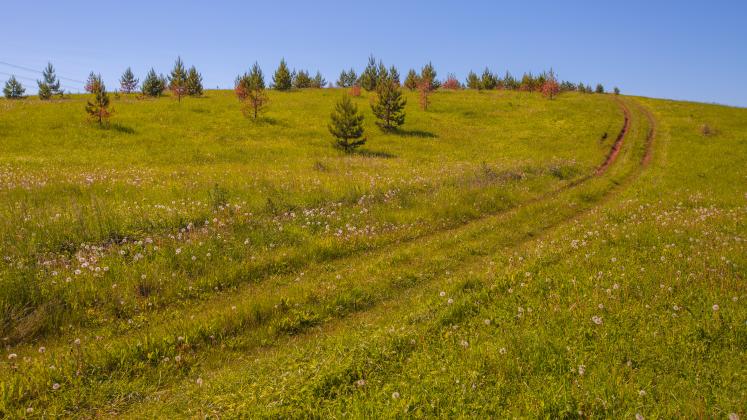Article written by: Keith Harmoney, K-State Research and Extension Range Specialist
Eastern redcedar (Juniperus virginiana) is the only evergreen tree native to Kansas. Before European settlement of the plains, it was believed to be found mainly in eastern Kansas on bluffs, ridges, and extremely steep slopes, or basically places that were difficult for fires to reach and travel through as prairie fires helped form the dominant grassland regions of Kansas.
Today, it has been introduced or has spread into most all regions of Kansas from shelterbelt introductions or from the lack of prescribed fires on pastures and rangelands into ecological sites where it originally did not occupy.
Kansas has undergone a great spread of cedar trees over the last 50 years, and the expansion appears to be increasing rapidly. The Rangeland Analysis Platform (RAP) (https://rangelands.app/), a website that evaluates vegetation presence and production based on satellite imagery, shows that Kansas has seen a wave of expansion of trees and brush on areas that at one time were predominately grasslands. Tree cover on these grasslands has nearly doubled in the last 20 years, going from a cover of nearly 4% to just over 8% according to the RAP data.
The amount of accumulated forage lost over the years due to this woody expansion is staggering. The amount of estimated forage lost in each Kansas county, also called the grassland yield gap, can be viewed at https://www.wlfw.org/yieldgap/Kansas/index.html. For instance, Phillips County, lost over 2600 tons of forage in 2019 alone due to past tree expansion into its grasslands, and Rooks County lost almost 1400 tons of forage. Without efforts to slow cedar expansion the amount of lost forage will surely increase, and 2022 has shown us the value of forage.
Eastern redcedar is a nonsprouting tree, meaning that it does not spread or propagate from it’s root system, even if the above ground part of the tree is killed or the trunk is cut off, but rather it is spread by trees being transplanted or by the release of seed into the landscape. Small, pea sized bluish green berries are produced only on female trees, and a single tree can produce thousands of berries, with each berry usually containing 1-3 seeds. A female tree will be able to produce berries by approximately 10 years of age. Meanwhile, male trees only produce pollen from small cones that look like bulged, dry leaf scales on leaf tips.
The sight of a single cedar tree in a pasture usually doesn’t result in rapid concern, but, knowing that a single female tree can produce thousands of seeds, the sight of this single tree means that many smaller trees could be establishing within the vicinity. This, of course, should raise concern that woody expansion is already well underway. Expansion usually occurs within 200 yards of the female tree, but birds and other wildlife may also carry the seed further distances. Cedar trees can often be seen establishing under powerlines, pasture fences, dead trees, and any other objects that serve as perches for birds that eat the berries.
When first spotted as a small sapling, a small shears or tree snip can kill trees when cut at ground level. It’s much easier to kill and remove trees through burning or cutting when very small rather than prolonging management of the trees until later years. For trees that are 4 foot tall or larger, cutting the tree off below the lowest branch with a chain saw or other motorized shear also will kill the tree, but pastures may need to be burned or trees may need to be stacked and burned in order to reduce creating perches for birds.
The best way to stop woody tree expansion in Kansas pastures and rangelands is to prevent tree seedlings from establishing in the first place. A prescribed burning regimen, from a range of burning even once every 10-15 years in very western Kansas to once every 3 years in eastern Kansas, could significantly reduce the number of pastures with encroaching cedar trees. Pastures with enough fuel for a 10-mph wind to move the fire across the pasture is typically enough fuel to support a fire that can consume 3-4-foot-tall cedar trees.
Once cedar trees have been significantly reduced or eliminated in a pasture, be vigilant in continuing to control these trees and keep them from robbing rangeland grasses of the sunlight and water they need for growth. In a summer drought such as 2022, and in drought years to come, our pasture grasses can use every drop of water they can get.
For more information, please contact the local K-State Research and Extension Office.
K-State Research and Extension is an equal opportunity provider and employer.

